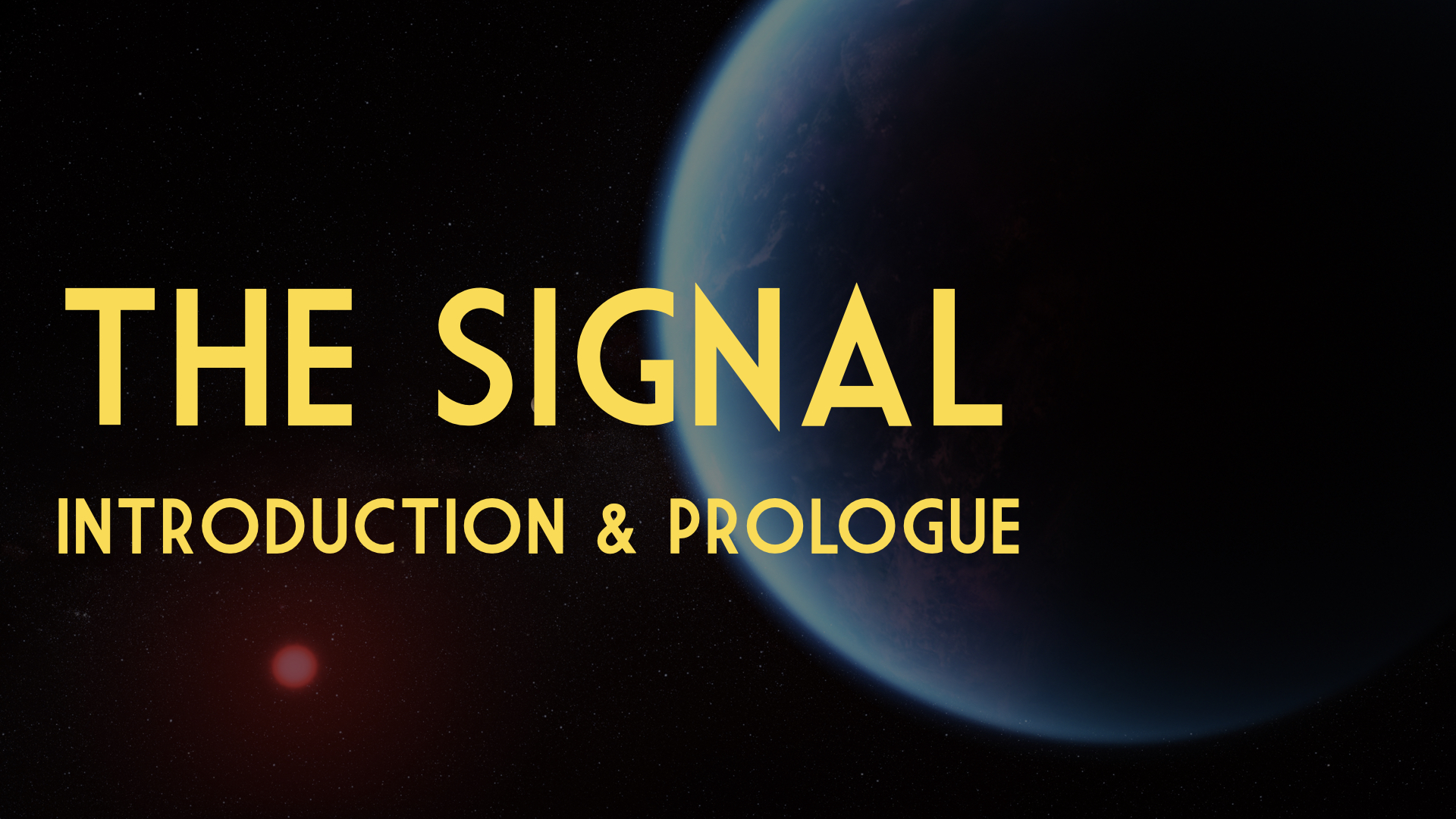Last updated on May 27, 2024
An Introduction to The Signal
This might seem weird but The Signal is actually the second book of a planned trilogy. At one point I had basically the entirety of the first book written, but after a bit of workshopping decided to give it at least a partial rewrite. Starting this second book is a part of that process. I wanted the first book to be cohesive with and flow into the second and third books.
That said, the first book—The Vault—takes place almost 700 years prior to this book, in an alternate history version of the much nearer future. Either way, my plan is to release both books chapter-by-chapter here on my blog and eventually as complete works both digitally and in print. You won’t need to have read any of the first book to understand the second and vice-versa, but each book will reveal more of the back story of the other as they go along.
If you enjoy science fiction like I do, I hope you’ll enjoy The Signal. And if you really do like it, would you consider helping me keep writing it by buying me a coffee?
Prologue – The Shipyards
Lagrange Station—officially “L1 Interorbital Manufacture and Space Operations Station”—sat in the area of perfect equilibrium between Earth and the Moon. Construction started with the core section in 2129 and has been more-or-less ongoing in the nearly 600 years since.
As humankind set out to explore the Sol system and eventually settle the stars beyond, Lagrange was our launchpad. It was built to be a processing plant for Lunar and asteroid mining operations, turning the raw ore into structural metal and decking, H3 for fuel, and every other component used in space exploration.
It had started out as that single central cylinder housing the fusion reactors, batteries, central computer systems, and microgravity laboratories, connected by spokes to a larger concentric habitation ring spun up to a comfortable 0.4G. Now that ring was a cylinder 8km long and just over 4km wide, it’s interior surface marked with arcology spires housing the station’s 3.9 million residents and visitors.
The sixteen-story wall of the ring was now the strata into which hundreds of shipyards, factories, and hydroponic farms were built, along with the docking platforms on which ships could latch stern-out—allowing the station’s spin to provide their gravity.
It was here that most of the largest vessels that have made up the United Earth Fleet were and continue to be built. Newest among them: the UEFS Aconcagua, first ship of the Aconcagua-class capital cruisers, massive ships meant to be the command and sustainment center to an entire fleet of smaller ships.
The Aconcagua is one of the largest human vessels ever constructed, at 877m from top to bottom, with 200 decks housing its crew of 4,588. A pair of 1.9-gigawatt ABB fusion reactors coupled with enough decentralized battery capacity to run the ship for over a week powered the ship, a Soladyne 1.28-gigaPolder subspace field generator allowed the massive ship to enter and traverse subspace routes, and six Soladyne sublight ion engines allowed the ship to accelerate at a maximum 4.9G to a theoretical max velocity of 0.19C.
As a part of its duties to sustain the rest of the fleet, the Aconcagua had everything from recreational facilities, a fully capable multi-deck hospital, dozens of cargo bays, and flight deck spanning the entire width of the ship (minus the central core of the ship where its lifts, particle accelerator, and primary utility conduits run from top to bottom).
It was in this flight deck where Senior Ensign Adana “Addie” Forrester was going to spend the majority of her time. This was her first off-world assignment since graduating from the Academy at Colorado Springs a year prior. It was a prestigious assignment, and not one she took for granted.
Addie would be the payload officer of a CS-109 Albatross multirole spacecraft, one of sixteen of the relatively larger craft in the Aconcagua’s spacecraft wing. The Albatross could be configured for a variety of different missions by swapping out the mission payload module that fit into the ventral bay of the craft. Any of those payloads and missions—from medical evacuation to cargo transport—would fall under her purview.
During long days of pre-launch training aboard the ship, she had come to know many of her fellow crew members, made friends with most of them, and looked forward to becoming more of a family with them than anything she had on Earth. At night she watched from the view port of her dockside officers’ quarters room while the night-shift shipyard workers and robotic construction equipment placed the finishing touches on her new home.
On this particular night she watched as a dock shuttle carried the limpet shelter that was being temporarily affixed to the side of the ship’s hull for the ceremonial launch the next morning. The Admiral, the CO and XO, spacecraft wing CO (her boss’s boss’s boss), a few other officers, and a small group of other dignitaries would be present inside to christen the ship. A few speeches would be read, an invocation given by the ship’s chaplain, and the ceremonial cracking of a bottle of champagne against the cermet plating of the ship’s hull.
Tomorrow the Aconcagua’s new journey would begin, and Addie’s along with it.
The Signal is a work of fiction. Unless otherwise indicated, all the names, characters, businesses, places, events and incidents in this book are either the product of the author’s imagination or used in a fictitious manner. Any resemblance to actual persons, living or dead, or actual events is purely coincidental.
The Signal © 2024 by Taylor Sloan is licensed under CC BY-NC-ND 4.0. To view a copy of this license, visit https://creativecommons.org/licenses/by-nc-nd/4.0/

[…] Tuesday I released the prologue and a short introduction of my new book The Signal. I’ll be releasing new chapters of it episodically on the blog as […]